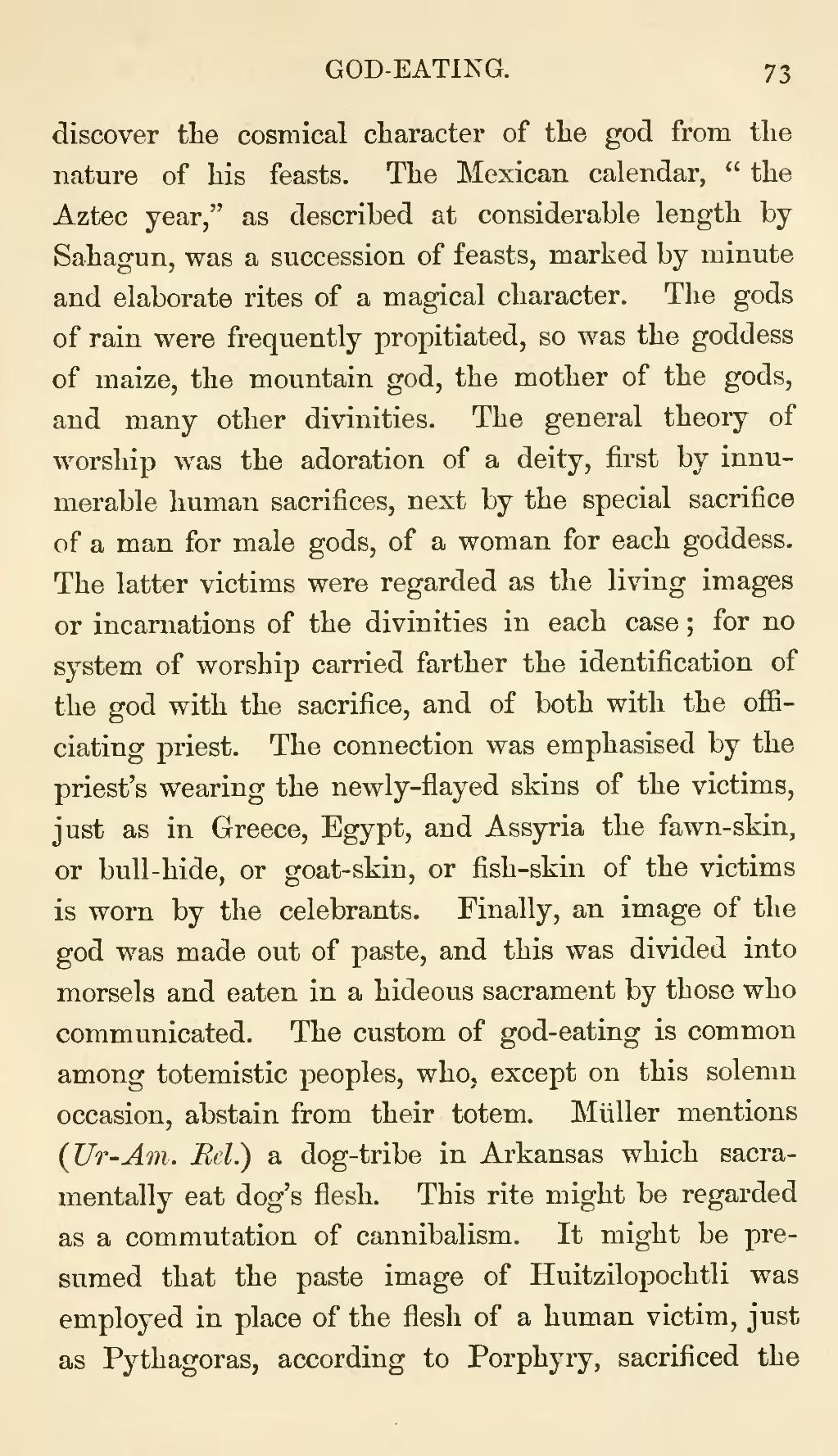discover the cosmical character of the god from the nature of his feasts. The Mexican calendar, "the Aztec year," as described at considerable length by Sahagun, was a succession of feasts, marked by minute and elaborate rites of a magical character. The gods of rain were frequently propitiated, so was the goddess of maize, the mountain god, the mother of the gods, and many other divinities. The general theory of worship was the adoration of a deity, first by innumerable human sacrifices, next by the special sacrifice of a man for male gods, of a woman for each goddess. The latter victims were regarded as the living images or incarnations of the divinities in each case; for no system of worship carried farther the identification of the god with the sacrifice, and of both with the officiating priest. The connection was emphasised by the priest's wearing the newly-flayed skins of the victims, just as in Greece, Egypt, and Assyria the fawn-skin, or bull-hide, or goat-skin, or fish-skin of the victims is worn by the celebrants. Finally, an image of the god was made out of paste, and this was divided into morsels and eaten in a hideous sacrament by those who communicated. The custom of god-eating is common among totemistic peoples, who, except on this solemn occasion, abstain from their totem. Müller mentions (Ur-Am. Rel.) a dog-tribe in Arkansas which sacramentally eat dog's flesh. This rite might be regarded as a commutation of cannibalism. It might be presumed that the paste image of Huitzilopochtli was employed in place of the flesh of a human victim, just as Pythagoras, according to Porphyry, sacrificed the
Page:Myth, Ritual, and Religion (Volume 2).djvu/87
Appearance

